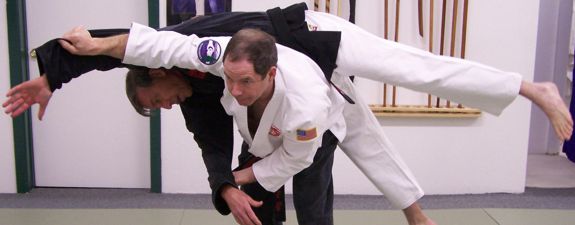
Jiu-Jitsu is said to have originated in Japan but actually its roots can be found in India and China. Jiu-Jitsu was influenced by many fighting styles, incorporating parts of many of them. The art of Ju-Jitsu began to grow during the period of clan warfare in Japan, from the eighth to the sixteenth centuries. During this period of constant civil war, the different styles of armed combat were undergoing continuous revision and refinement on the battlefield. The weaponless styles of Ju-Jitsu were integrated into the training of the Samurai during this time.
In 1603, Tokugawa Leysu united Japan under the control of the Tokugawa government, and so began the era that bears their name. During this time, as Japan was united, there was less and less armed warfare, and so the weaponless style of Ju-Jitsu became more and more prominent.
The Tokugawa era came to an end with the Meji restoration, which returned the emperor to power. Many of the samurai had supported the Shogun in the wars that began the restoration, and as a result, Emperor Melse published an edict that made it illegal to practice the old combat arts. Some masters, however, continued to do so underground, or moved to other countries.
In the mid 19th century, the Samurai class was formally disbanded, and many schools died out.
The words Jiu-Jitsu comes from the Chinese characters Ju (Jiu), which means pliable, gentle, or supple, and Jitsu (Jutsu) which means art, true or science of technique. Jiu-Jitsu can be both offensive or defensive and contains elements of striking, kicking, throwing, choking, joint locking and controlling.
